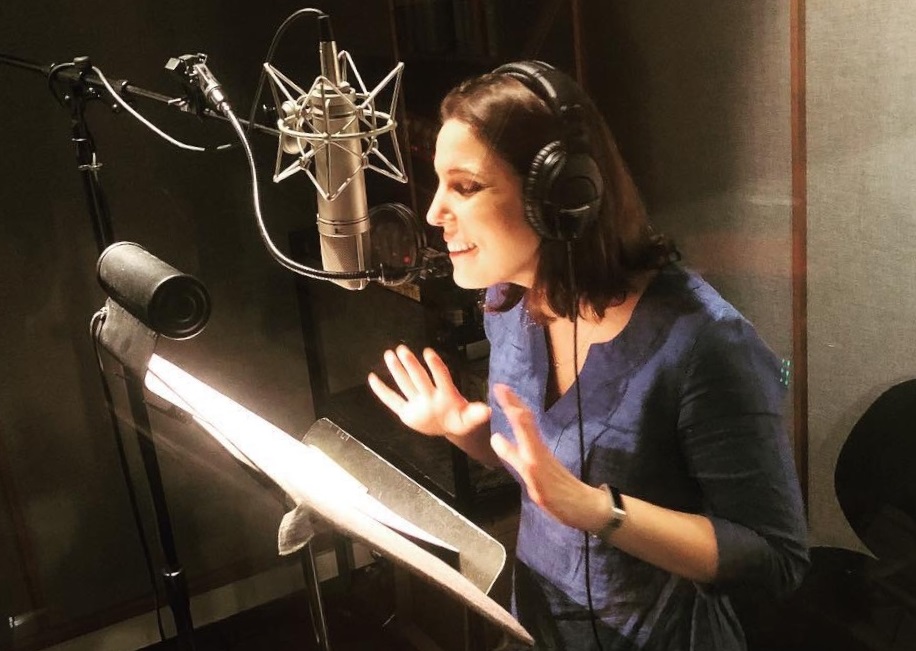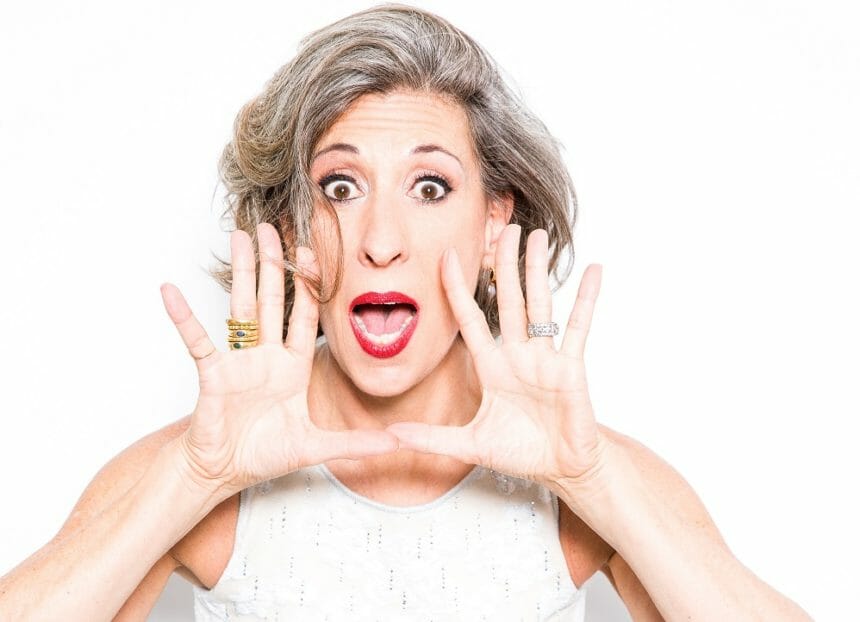Debbie Irwin has lent her voice to audio tours of the Statue of Liberty and the Guggenheim Museum. She has been heard in commercials for eBay and Revlon. Yet she says her most memorable experience in a recording booth came during one of several gigs working for big pharma.
During the recording session, Irwin couldn’t quite match her tone to the messaging. After another unsuccessful take, the director asked, “Debbie, can you give me a little less Ginger?’”
“So I’m thinking, ‘OK, ginger’s a spice. What does ginger sound like? What do they want that’s not ginger-y?’” Irwin recalls. “Then he adds, ‘And give me a little more Mary Ann.’ And I went, ‘Oh, I know what you want — less movie star, more girl next door.’”
That interaction encapsulates the life of a voiceover actor, especially one who heralds herself as “the voice of big pharma” on her website. It also reflects the trend toward pharma brands wanting a more relatable voice for their ads, which need to appeal, inform, and entertain in equal parts, and all at the same time.
Pharma voiceover requires the same enunciation and conveyance of warmth, or other tonality, that non-pharma spots do, but adds multisyllabic, hard-to-pronounce verbiage into the mix. Did we mention the sheer volume of the terminology, the 60-seconds-and-out time constraints, and the FDA-mandated content? The job isn’t for the faint of heart. Or voice.
Given their ubiquity, it’s easy to forget that DTC pharma ads, as a marketing vehicle, have yet to celebrate their 40th birthday. When the FDA loosened the reins on DTC advertising in 1997, healthcare marketers immediately capitalized on the new freedoms. In doing so, they created a new specialty for voiceover artists such as Irwin and Joey Schaljo.

Both came to New York City years ago to pursue acting and, after failing to find the type of stage work they preferred, made their way into careers in voiceover. Both remember dealing with a host of early challenges, especially when it came to pronunciations of medical terminology.
“It was a mouthful,” Schaljo recalls. “You have to sound like you say these words all the time, like it’s a common vernacular for you.”
And that’s before she attempted to make the verbiage flow conversationally. “The biggest key to being a good voiceover talent is reading like you talk, not reading like you read,” Schaljo continues. “It’s being able to vary your pitch and cadence pattern as you normally do when you’re talking off the cuff.”
A common misconception about voiceover work is that anyone can do it. After all, the thinking goes, all you’re doing is reading words off a page. How hard can it be?
It was a mouthful. You have to sound like you say these words all the time, like it’s a common vernacular for you.
Joey Schaljo
One glance at a pharma ad script generally ends such arguments. “Not everybody has the ability to say tongue-twisting terminology and say it convincingly, as if you are the pro,” Irwin notes. “There’s acting involved in that. That’s why they call it voice acting.”
Then comes the challenge of affecting the desired tonality. In years past, booming announcer baritones dominated the ad world.
Now, advertisers, especially those in health-adjacent verticals, covet voiceover artists who can speak to consumers in a way that sounds as if it’s coming from a trusted friend.
“You have to strike a balance between sounding knowledgeable and authoritative but also not scary,” Irwin explains. “Oftentimes, given the important safety information that has to be communicated, you don’t want to scare people, even as you’re telling them it’s possible that this particular drug may kill them. You have to convey a certain amount of natural warmth.”
The ability to make the words written on a page convey meaning and evoke a feeling is far from common, according to Strikeforce Communications founder and CEO and DTC Hall of Famer Mike Rutstein. Finding the right person for the job means keeping an open mind during the audition process.
“Sometimes you go in with a vision of what you want it to be and sometimes you’re surprised,” Rutstein explains. “You hear a voice and you think, ‘Wow, that really adds something.’”
While few voice artists hit their marks on the first take — “sometimes you literally have to go line by line,” Rutstein says — overall he’s impressed with the level of talent in the pharma voiceover world.
“The pool has expanded over the years. A lot of people who set out to become actors saw real opportunity in doing voiceovers, and that has drawn them to this space. They realize getting booked for a [voiceover] job is easier than getting booked on Broadway,” he adds.
While neither Irwin nor Schaljo can disclose specifics about the campaigns which they’ve worked on — both have signed myriad non-disclosure agreements — they say there’s a good living to be made in voicing pharma ads.
“When people ask me, ‘What kind of work pays the most?’ my response is, ‘Think of the sectors of the business world that make the most money and those that don’t make as much money,’” Schaljo says. “Pharma and medical are ginormous industries and their advertising reflects that.”
Of course, with those massive budgets comes increased use of cutting-edge tech. Rutstein believes AI will find its way into voiceover sooner rather than later.
“I am sure somebody is going to find a way to create voice duplication tech. Over time, a read will get picked up and they’ll be able to manipulate that voice and use it in different ways. AI is picking up everything else, right?”
Listen to the episode of The MM&M Podcast featuring voiceover actors Schaljo and Irwin.
From the April 01, 2019 Issue of MM+M - Medical Marketing and Media







